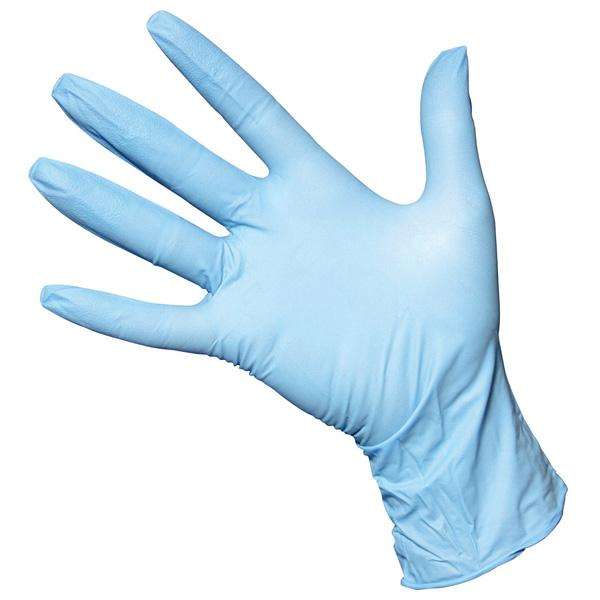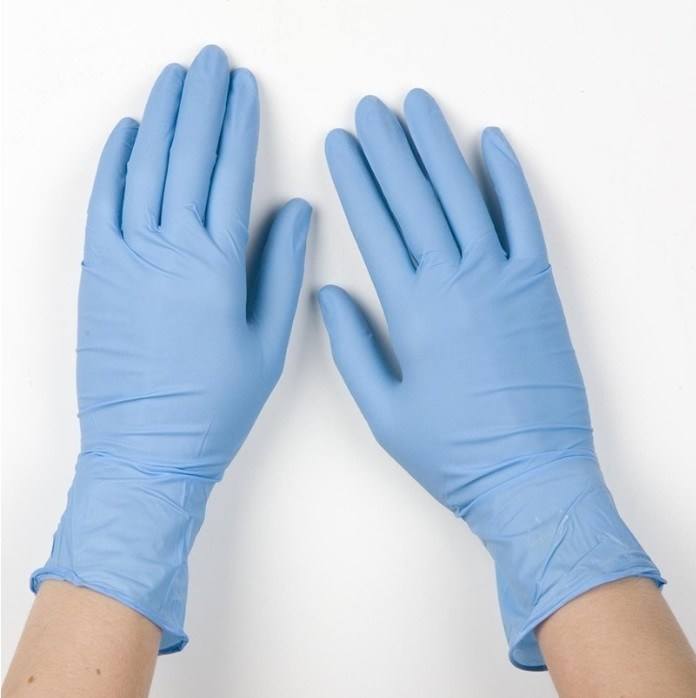Nitrile Glove
-
What are they made of?
Nitrile gloves are made of nitrile rubber or synthetic latex. Nitrile rubber is also known as Krynac, Europrene or Nipol. It contains no latex proteins. Most types of nitrile gloves have cornstarch inside. The cornstarch acts as a lubricant to make putting on the gloves easier. Cornstarch actually replaced copodium powder and talc, since these latter materials can irritate skin tissue. However, even cornstarch has been found to possibly impede with healing, and that's why some nitrile gloves are manufactured within it.
-
What are their characteristics?
Over the years, the popularity of disposable nitrile gloves has risen to become the latex-free exam glove of choice for nurses and doctors. Due to its resilience, nitrile gloves work very well in harsh, high-stress environments. Made from nitrile material, these synthetic exam gloves are known for providing excellent protection to a wide range of chemicals in addition to being an effective barrier against blood-borne pathogens. For this reason, nitrile gloves are widely used for handling toxic chemicals such as chemotherapy drugs. Most importantly, nitrile is latex-free and provides three times more puncture resistance than standard latex exam gloves. It is no surprise that nitrile exam gloves are becoming the preferred latex-free glove of choice.
-
What are their protection qualities?
Nitrile exam gloves are known for providing maximum protection with the ability to provide chemical protection. Compared to synthetic vinyl material, nitrile gloves are less likely to tear with a higher resistance of being punctured; however, this does not mean that nitrile gloves are impervious. You try hard enough; you can tear any exam glove whether it's made out of latex or nitrile. But when used properly, you will find nitrile exam gloves to be very durable. -
Any allergic reactions to any of the materials the glove is made from?
There have been occasional reports of allergic reactions to Nitrile gloves. This is more likely with powdered gloves than powder-free. Powdered gloves are cheaper and easier to put on, but it is the powder that can cause an allergic reaction. Instances of allergy to powdered Nitrile gloves are very rare however, and far lower than latex allergy occurrences. -
Why use Nitrile Exam Gloves in Healthcare?
Nitrile gloves are preferred over vinyl glove as the latex alternative. Some hospitals have been able to switch to a 100% nitrile glove house-wide policy. For other healthcare facilities, nitrile exam gloves are used in a combination of other medical glove materials. In such cases, these healthcare facilities have a limited supply of nitrile gloves which are reserved for functional purposes where extra protection is required. Nevertheless, it is common to find nitrile gloves in critical and noncritical care units, emergency rooms, labor and delivery wards, laboratories, phlebotomy, pharmacy, oncology departments, and environmental services.
Advantages
- Price: Thin nitrile examination gloves can compete directly in price with latex examination gloves, yet offer significant other benefits.
- Comfort: Nitrile softens rapidly on the skin to provide the most comfortable experience, even when the glove is used for extended periods.
- Tactility: Close fitting nitrile provides enhanced tactility, especially with micro roughened fingertips.
- Chemical Resistance: Nitrile is inherently more chemical resistant than latex.
- Improved Heat Dissipation: The thin film nitrile is able to dissipate heat from the hand faster, reducing sweating and skin irritation
- Environmental Issues: Thin nitrile gloves offer significant environmental benefits, in storage and transportation. Cases of gloves contain up to twice the quantity in the same volume. This results in the halving of transportation costs of gloves from the manufacturing site to the distributor, and additionally from the distributor to end user. Storage costs throughout the supply chain are similarly reduced. Finally the cost of disposal of the used product to landfill or incineration is significantly reduced.




